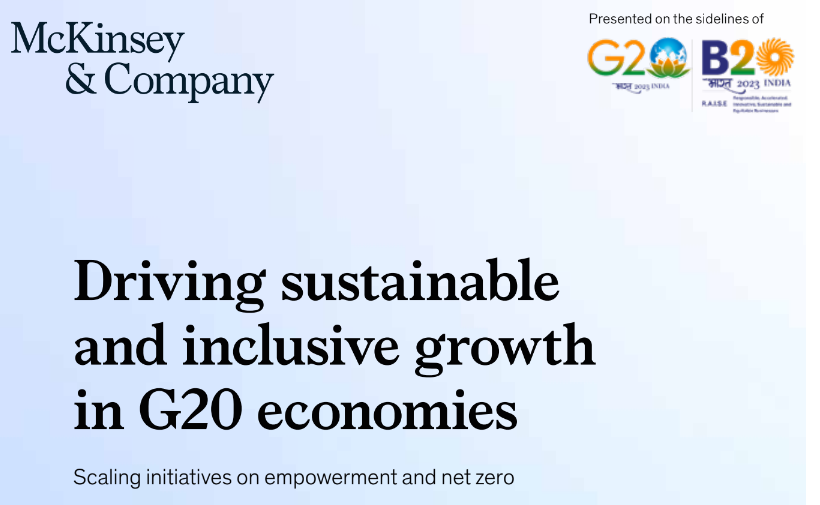New Delhi: Among the G20 nations, the highest proportion of population, as a share of the country total, below the economic empowerment line live in India and South Africa (over 75 percent), followed by Brazil, China, Indonesia and Mexico (over 50 percent), according to an analysis by McKinsey & Company.
In its report titled “Driving Sustainable & Inclusive Growth in G20 Economies” the global management consulting firm defined economic empowerment as having the means to meet the full range of essential needs and begin to attain economic security. This is based on each country’s cost of living; for India, the empowerment line is set at $12 PPP a day.
“In more advanced economies in Europe and North America, about 20-30 percent live below the empowerment line. Our analysis suggests that closing this empowerment gap in G20 economies would require a cumulative increase in spending on essentials to the tune of $21 trillion over the decade to 2030,” it said.
G20 economies would need to invest about $35 trillion this decade, over and above current spending, to be on track to reach net-zero greenhouse gas emissions by 2050,
Stating that the economic geography has now shifted eastward, the report said that in 2030, China, India, and Indonesia will have three of the world’s five largest working-age populations, and in terms of growth, China and India show core strengths among the nations.
In 2020, more than 700 million people lived in extreme poverty as defined by the World Bank. However, about 4.7 billion people worldwide (60 percent of the global population) are not yet economically empowered.
“Of these, approximately 3 billion live in the G20 economies. The gaps are most pervasive in India and South Africa, where more than three-fourths of the population live below the empowerment line,” the report said.
It said there are several promising examples of G20 economies making progress towards net zero. That includes increased renewables generation by rapid ramp up of solar energy as percentage of total power mix in India. The country witnessed an expansion of solar footprint through government and achieving 60+ GW solar capacity in 12 years (from less than 10 MW earlier).
According to the report, the G20 economies would need to invest upwards of an additional $35 trillion this decade, above 2020 levels, to be on track for the world to reach net-zero emissions by 2050.
Based on the estimated reductions in CO2 emissions needed to reach net-zero varies by country, Argentina, China, and Brazil need to make the largest cuts in emissions among upper-middle-income countries.













